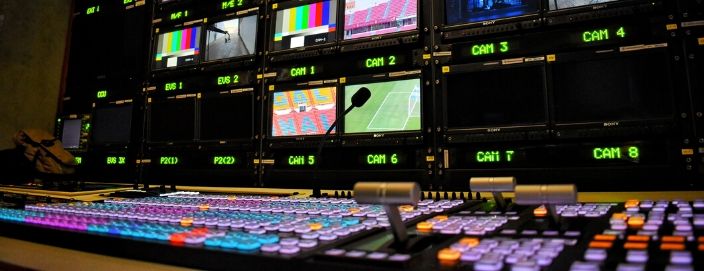After the COVID-19 crisis: What’s next for local media organizations?
The past two months likely felt more like two years for many of you having to rapidly adapt in light of the COVID-19 outbreak. I hope most of you are settling into some sort of rhythm and executing day-to-day on plan.
If you’re not already, you must quickly pivot from tactical execution to focus on protecting and nurturing your business for the future. We will move past this and be smarter for it. You should be capturing and processing this right now so you can plan for a successful recovery.
If your station in January 2021 looks like it did in January 2020, you will have missed an opportunity the likes of which you will never see again. Simply put, you will have failed.
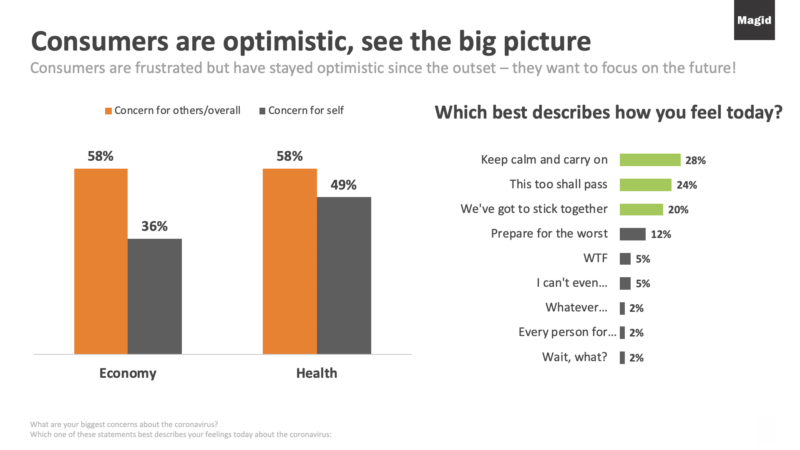
As we look at the ongoing research we field each week to track perceptions of this crisis, as well as hear the feedback from our clients on what is working and how stations are adapting to these times, we see five fundamental areas of focus.
1 – Moving back in
Subject to location, many will soon have the opportunity to move people back into stations and begin operating under “normal” conditions. But after all you’ve (hopefully) learned, you can’t just go back to normal. Embracing what you’ve learned over the past few months can make you more competitive and potentially save significant dollars.
What should you consider?
- What work really needs to be done inside the building? Can some resources be deployed more efficiently and effectively from a remote location?
- How have you learned to communicate while separated? How can that make you more effective at sharing content across dayparts and platforms?
- How have you leveraged corporate resources and structures? How can you further effective and responsible use of centralized assets?
- Timing – what needs to happen first? What can wait?
Whatever you do, make as many strategic moves as you can make now. Don’t punt hard decisions or actions down the field.
2 – Talent
Anchors and reporters have had to adapt to home-based presentation and guess what? Viewers like them more because of it! They don’t really prefer this approach, and you’re not really going to leave all of your on-air talent at home. But you do need to takeaway that this style of presentation has forced our presenters to be more authentic – something we’ve known to be a driver for a while now.
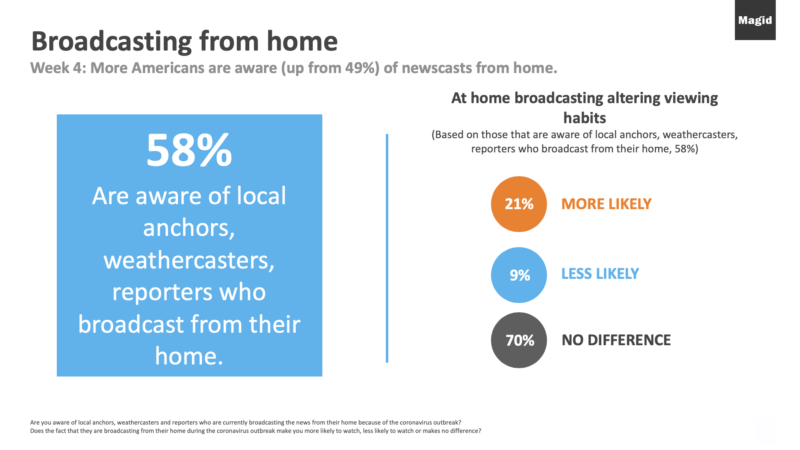
When you finally move everyone out of their homes, how will you ensure that authenticity and connection isn’t lost? What is it that has worked? What have the limitations taught your teams? Catalogue this and make action plans now for everyone in your station so you can leverage what you’ve learned.
3 – Mornings
The magnitude of this story has unsurprisingly driven growth in ratings and digital metrics. But mornings have been the exception for most stations. Working from home is changing the habits of many, and one of the consistent themes is sleeping later and skipping the morning news. Most will return to office work soon enough, forcing them to go back to an earlier schedule. But do not assume they will simply return to a morning newscast habit.
Consumers in your market still need to get information to start their day, and they’re finding other outlets. With many of their needs fulfilled through digital, cable or national news outlets, they may find they just don’t need the current version of what you do in the morning. Given the proportion of revenue driven by morning newscasts, this is a big problem that needs attention now.
What should your morning news presence be? How can it fulfill the needs of consumers in the future? How can you get from where you are to where you need to be? If your morning newscast in November looks like your morning newscast in January or February, you’re going to be in trouble.
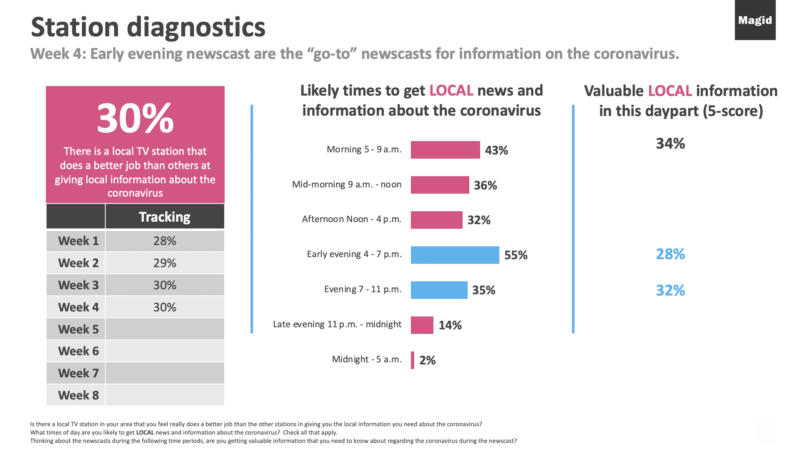
4 – Your Brand
Changing habits present an opportunity (or challenge) that expands far beyond mornings. Our research tells us that 69% of people have tried a new brand during the quarantine. From news stations and streaming services to new food products or packaged goods, consumers are sampling right now! And considering that less than a third of news viewers think a particular station has done a better job covering this story than the others in their market, it’s safe to assume sampling in your market is very high.
What are you doing to evolve your brand position and value proposition? What do you need to mean to your market moving forward? How does that manifest itself in promotion across all of your platforms? Now is the time to define this path.
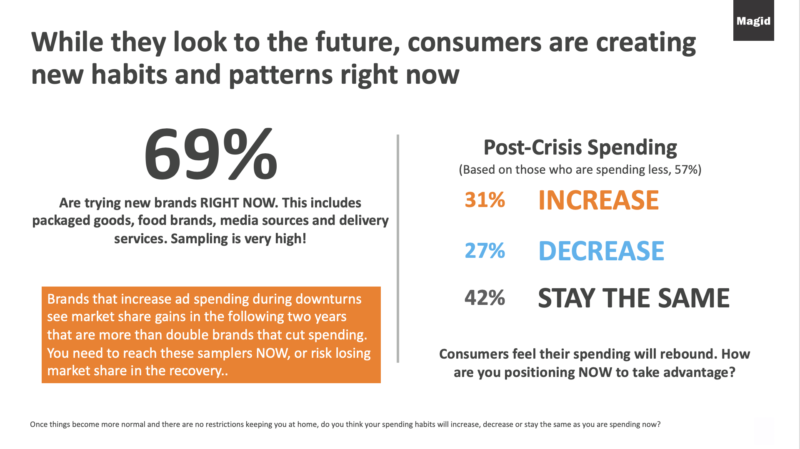
5 – Monetization
It is safe to say that nobody thought 2020 ad revenues would look like this. What do you do now?
- Stop the bleeding: If you haven’t proactively reached out to your customers to counsel them through this phase and position yourselves as experts, then you’re way behind. If an advertiser is calling you first, you’ve already lost the business. Continue to stay ahead of your advertisers; counsel and support them to protect their spend during the recovery.
- Get ready for a surge: Our tracking research shows consumers perceive a relatively rapid and healthy recovery in their spending. They’ll be ready. Help your advertisers be ready.
- Fight for local dollars: As different states and regions open on different schedules national advertising will be considerably less efficient. This could be a benefit for you. Be sure you’re well-versed on the regulations in your market and the major national advertisers whose footprint overlaps yours so you can position yourself as a resource to get their business going again.
- New revenue streams: We are seeing first-hand what a collapse in the advertising landscape can do to our industry in short order. The time has come to define additional means of monetization that diversify your revenue mix.
In this business, we know events like this make or break brands. You need to take that seriously and get focused on the future. It will come sooner than we think.
